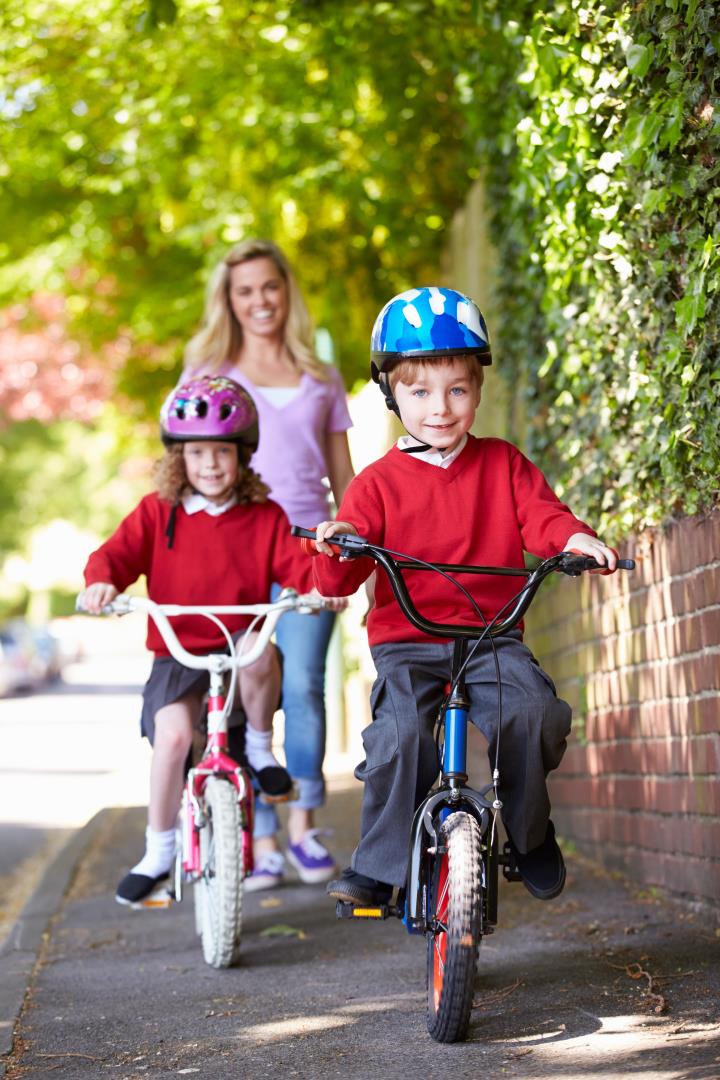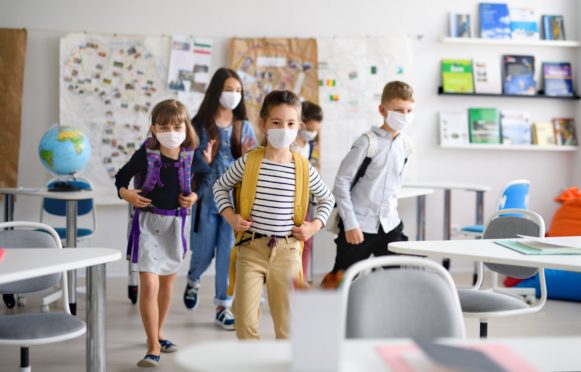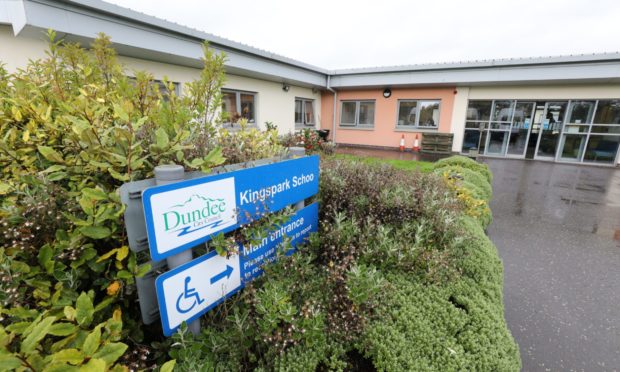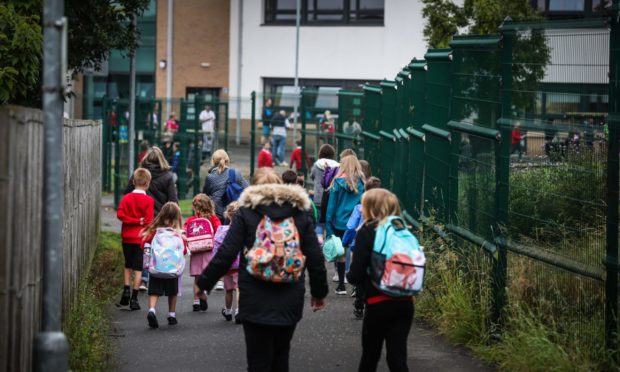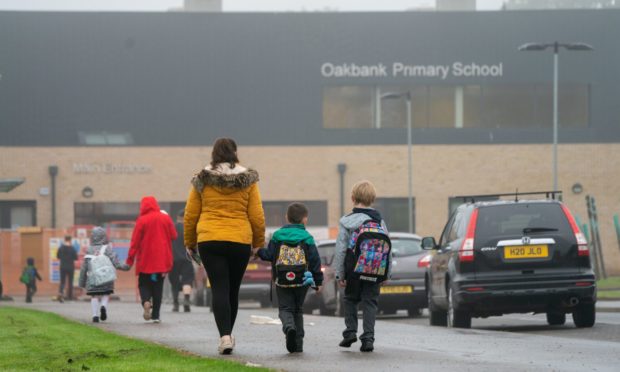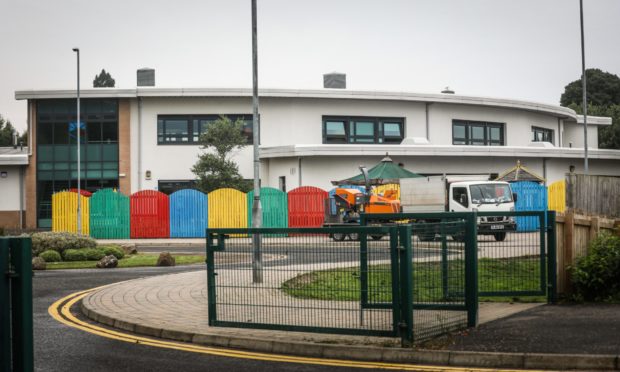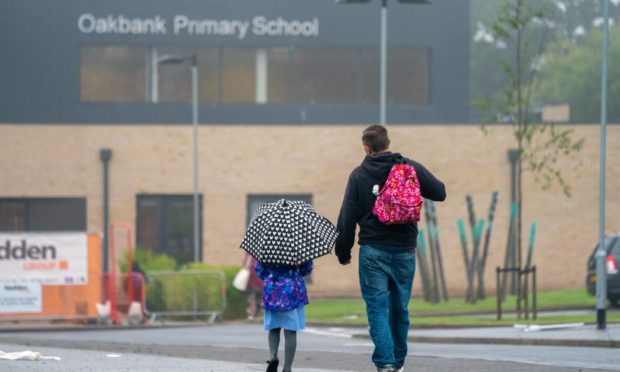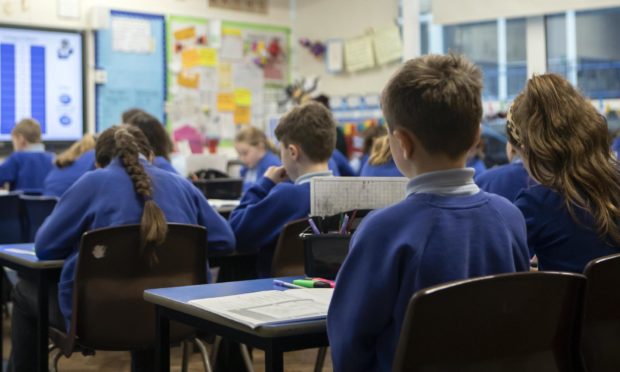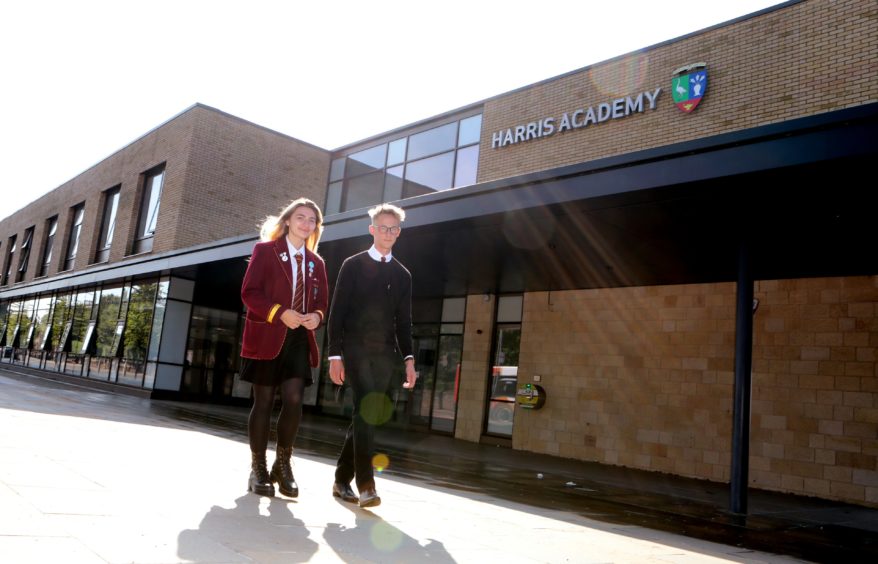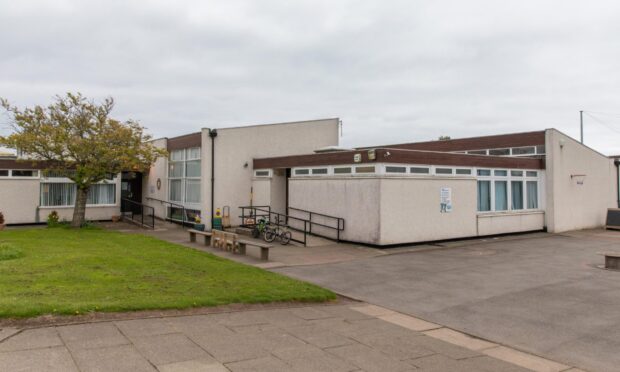Most parents of schoolchildren in Tayside and Fife are worried about risk of infection from Covid-19, according to a survey.
The Courier’s back to school survey revealed that almost 85% of parents with a child in secondary school are concerned – 48.8% of them very concerned – about the virus spreading now pupils are back in full-time education.
This compares to just 4.7% of parents and carers who are “not at all concerned.”
Our survey illustrates the feelings of parents and carers about children returning to school while the coronavirus is suppressed but still present, highlighting concerns and how the pandemic has changed their behaviour.
We asked people how they felt about there being no requirement for face masks and social distancing among young people, with older pupils only encouraged to distance where possible.
In it parents and carers of primary school pupils also expressed worry about risk of infection, with 62.5 % concerned – 36.4% “very concerned” – compared to 17% of respondents “not at all concerned.”
Karen Caesar, of Inverarity, Angus, is so worried she is keeping her son, in P7, and P3 daughter home for another couple of weeks.
She said: “I thought long and hard about this and I have decided not to let my children start immediately, I want to see how things unfold.
“I have a disability and I’m worried that the children bring home the virus to me and I need hospital care.”
A lone parent, she said: “The consequences of me having to leave them to go into hospital would be damaging to their mental health.”
Karen said she is a registered general nurse with a masters degree in public health and has closely followed the First Minister’s daily updates.
She said: “It’s madness to commence our schools a month ahead of England when we eased lockdown three weeks after England.
It’s madness to commence our schools a month ahead of England when we eased lockdown three weeks after England.”
Karen Caesar
“I would like to see parents given the choice, rather than being bullied into putting their children back to school by the Scottish Government.
“If those parents who can stay at home with their children were allowed to it would reduce class sizes for those who do go to school and take pressure off teachers.”
Research has suggested that children are considered less susceptible to Covid-19 infection and they are believed to have a low likelihood of onward transmission.
Data previously released by Public Health Scotland shows that in Scotland, as of 12 July 2020, 151 (0.8%) of a total 18,365 positive cases were among people aged under 15.
This is a rate of less than 20 per 100,000 of the population in that age group.
Opinion was divided on face masks not being required in schools for pupils or for teachers, unless they are to be in prolonged closed contact with children.
Some 28.3% were not happy at all with this decision while 24.9% were very happy.
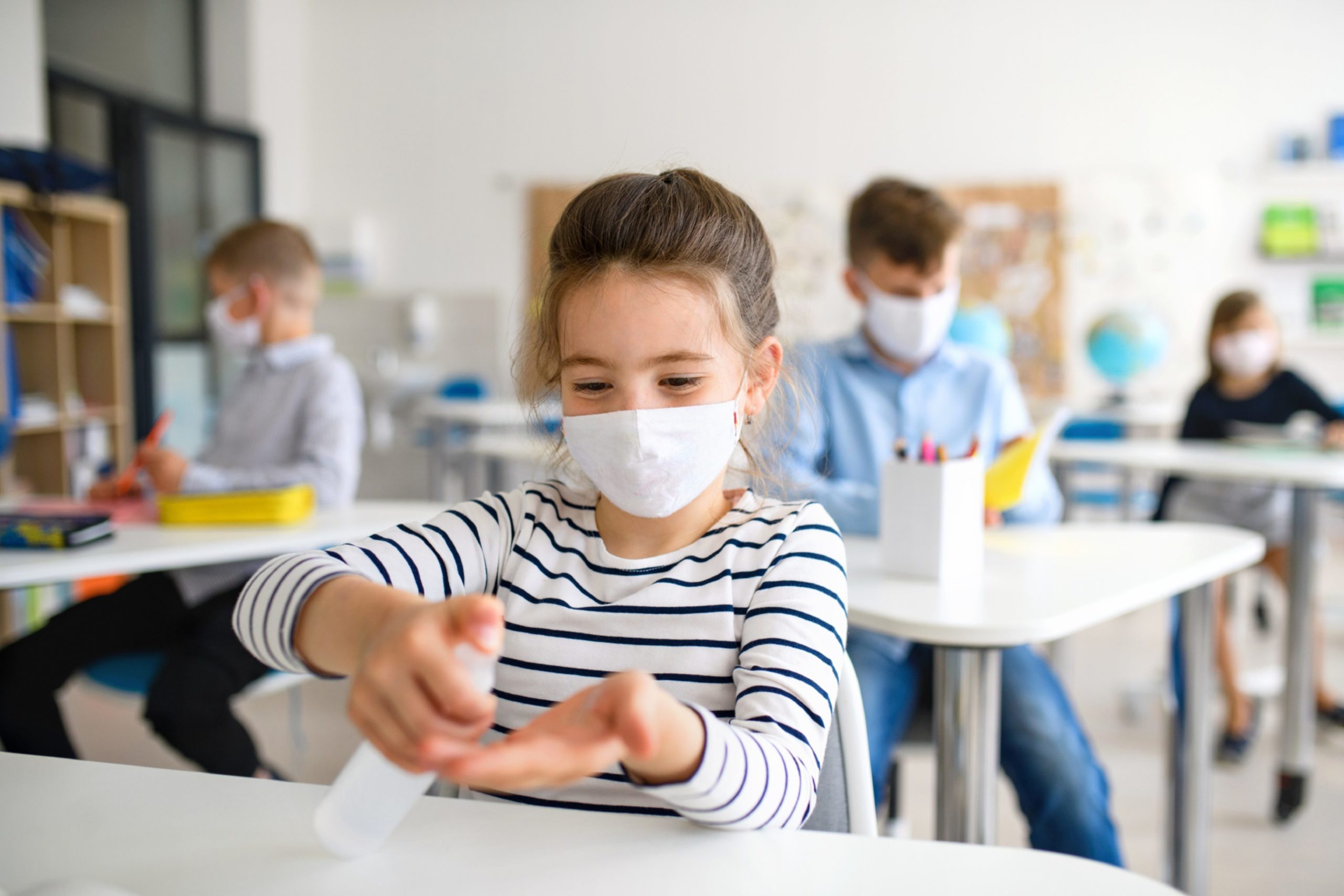
Opinion was similarly split on the ruling against social distancing for primary school pupils, with 29.5% not happy at all with this and 26% very happy.
The Scottish Government admits the science is less clear on this issue for older pupils and they are being encouraged to socially distance where possible upon their return to secondary school.
Some parents have questioned how this will be possible, especially if the school building is already overcrowded.
There’s no way that young people can socially distance in these schools.”
Perth parent
One Perth mum, who wished to remain anonymous, said: “There’s no way that young people can socially distance in these schools.
“I’m also a bit dubious about the guidance saying they don’t have to wear a mask because whatever protection you can have is better than none at all.
“I don’t think fault lies with the school though because the kids have to go back but they are just getting more and more thrown at them to try and manage and it’s impossible.”
John Fellows, of Perth, is also worried about the lack of social distancing and need for face masks for secondary pupils, stating that a 17-year-old could have to cover their face to work but not in class.
The public affairs manager has children in P6 and P2 at Oakbank Primary School and said: “It must be really difficult, given the amount of people you come into contact with in a busy school, especially in older schools where there is less space.
“I’m glad it’s not a situation I have to worry about.
“If you have teenage children you have to balance their need for independence and to see their friends with the potential health implications.
“Unlike teachers in primary school, teachers in secondary schools will see a huge amount of young adults in a day.”
Despite concerns over the risk of infection, around a third of parents said they were “very happy” with the recent government advice on schools reopening from this month.
Lynn McIntosh, of Monifieth, has a son in P2 at Seaview Primary School, and a daughter about to start nursery.
The swim instructor has no qualms about schools reopening full-time.
She said: “Rightly or wrongly I think we have to live with what’s going on and life is all a risk, you never know what’s going to happen.
“For all children of all age groups, especially older ones sitting exams, they need to get back, they can’t miss out on their education.”
They need to get back, they can’t miss out on their education.”
Lynn McIntosh
She was worried about her son missing out on socialising with his peers and on the fundamentals of reading and writing in P1 during lockdown.
She said: “He has taken most of it in his stride, but you do wonder what the impact of it all is going to be.”
That view tallied with the survey’s finding that there was significant worry over the potential long term impact on children’s education of the lockdown.
Some 26.6% of parents and carers were “very concerned” about their children’s education level since being away from secondary school, with 36.6% saying they were also “very concerned” about pupils’ readiness for exams.
Clare Lindsay, whose daughter is set to start her second year at Harris Academy in Dundee, is delighted pupils are returning to school but is hoping measures will be put in place to support those who may be struggling.
She said: “I think that’s maybe the biggest worry for high school children’s parents.
“If you have a child at primary school, they’ll catch up but when you’ve child that’s sitting their exams in the next two years, it could go against them slightly.
“Hopefully the schools have things in place so the children will catch up and we won’t see this big impact.”
There were worries about the lack of social interaction for pupils during lockdown, with 59.2% of primary parents and 49.3% of secondary parents concerned or very concerned.
Georgia Blair’s, whose first day in P6 at Inch View Primary School, Perth, was delayed by delayed flooding.
She is an only child, and her mother Elaine said that as time went on she become lonely and missed her friends during lockdown.
Elaine said: “Home schooling got harder and harder as time went on and she became a bit more withdrawn.
“She kept saying she felt lonely and missed her friends.
“Her dad was at work so it was just us at home and trying to find things that were interesting. It has been a difficult time for Georgia, especially being an only child.”
Communication from schools during lockdown and in preparation for the return was largely viewed positively, with 64% of primary school parents rating it from average to excellent in the latter.
But there were issues, with a quarter saying it was either poor or very poor.
One Fife parent, who asked to be identified only as Katie, has two children with very different experiences of going back to school.
Her son is going into S1 and has no idea what to expect.
Katie said: “All he had was a two-and-a-half hour induction visit and now it seems like all of that has changed.
“All of the questions we would have expected to ask, we haven’t had the chance due to coronavirus.
“He goes back to school tomorrow (Friday) and I don’t know how school lunches work and whether to give him money or pay online.”
The survey also revealed a change in way parents and carers shop for school uniforms, with 13.39% saying they bought the whole lot online last year to 40.63% this year.
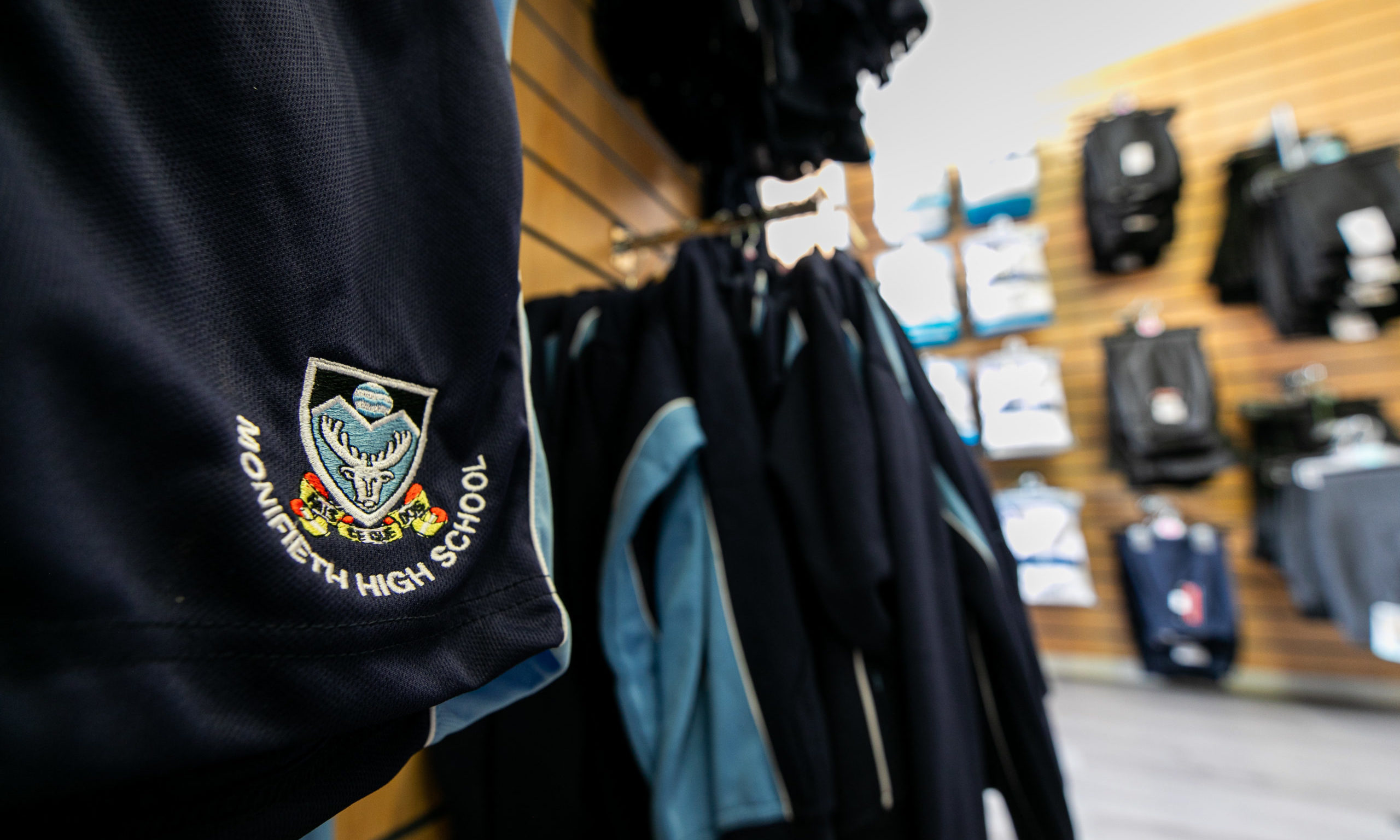
John told us: “It’s a lot easier and more convenient to shop online just now, and it’s safer as well. Shopping just now, if it’s busy, can be quite an uncomfortable feeling.”
Lynn said: “I haven’t been taking the kids that often into the shops so it’s easier to do it online.”
The new normal appeared to have minimal impact on travel plans for survey respondents.
For those with primary pupils 45.8% walked pre-lockdown and 47.9% intended to now. The school bus was the transport for 9.7% previously, compared to 8.5% now and those cycling rose to 4.2% from 2.8%.
For secondary pupils walking rose from 40.3% to 41.7% while the school bus use dropped from 25% to 18.1%. None cycled before and no one indicated they would be starting.
